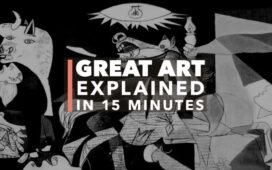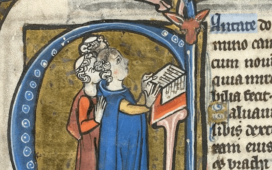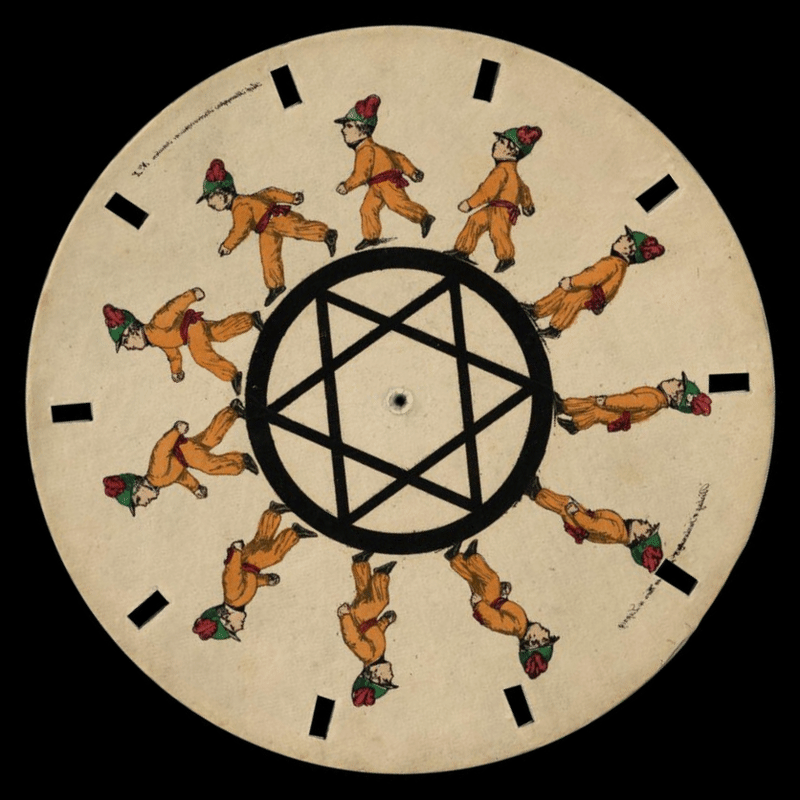It doesn’t take an expert in the field to know that, around the world, there is much disagreement on the subject of religion. But as explained in the UsefulCharts video above by Matt Baker, whose PhD in Religious Studies makes him an expert in the field, every source does agree on the fact that the four largest religions in the world are Christianity, Islam, Hinduism, and Buddhism. “These are the undisputed ‘big four,’ ” Baker says, and they’ve thus been the subjects of the various videos and charts he’s made explaining their histories and characteristics. But in his area of expertise, he adds, “it is often said that there are five major world religions.”
The fifth major religion, as you may have already guessed, is Judaism, though its sixteen million adherents don’t enter the same numerical league as the world’s 1.9 billion Muslims or 2.4 billion Christians. The Jewish faith punches well above its weight in respects like its age, and its being “the parent religion to both Christianity and Islam.” Coming in at 400 million believers is a religion, or category of religions, that to many readers may seem much less familiar than Judaism: Chinese folk religion, or as Baker calls it, “Chinese Syncretism,” referring to its mixture of different ideas and traditions.
You can get up to speed on Chinese Syncretism, as well as Islam, Hinduism, and Buddhism, in the two-hour video at the top of the post, which compiles Baker’s UsefulCharts explanations of those religions’ evolutions and all the intellectual, doctrinal, and cultural branches that have grown in the process. To Christianity, the biggest of the big four, Baker has devoted an entire series, presented in its entirety in the three-hour video just above. You may be able to describe the differences between Catholicism and Protestantism, but what about the differences between, say, the Syriac Catholic Church, the Evangelical Free Church of America, and the Mekane Yesus Church of Ethiopia?
Baker can and does describe those differences, using his own family tree-style charts as a visual aid. Only one viewing may not be enough to gain a clear understanding of what separates each Christian denomination from every other. But it will certainly be enough to instill an understanding that, in an important sense, there is such thing as Christianity, singular; better, perhaps, to speak of the many and varied Christianities than have been practiced over the millennia. The same goes, in different ways, for the other major world religions, and if you zoom in far enough, even the minor ones turn out to be rich with their own complexities. But then, as Baker surely would agree, there are no minor religions — at least if you’re curious enough about them.
Related content:
180,000 Years of Religion Charted on a “Histomap” in 1943
A Visual Map of the World’s Major Religions (and Non-Religions)
Animated Map Shows How the Five Major Religions Spread Across the World (3000 BC — 2000 AD)
Philosophy of Religion: A Free Online Course
Based in Seoul, Colin Marshall writes and broadcasts on cities, language, and culture. His projects include the Substack newsletter Books on Cities and the book The Stateless City: a Walk through 21st-Century Los Angeles. Follow him on Twitter at @colinmarshall or on Facebook.















